- Choosing the right growing medium is key to starting your cannabis crop out on the right foot. It is not a decision to be made lightly, as it is will determine the success of your crop and save you a lot of trouble in the long run.
- If you don’t know where to start, our thoughts on the pros and cons of growing in soil, coir, rockwool, expanded clay granules and aeroponics might be of help.
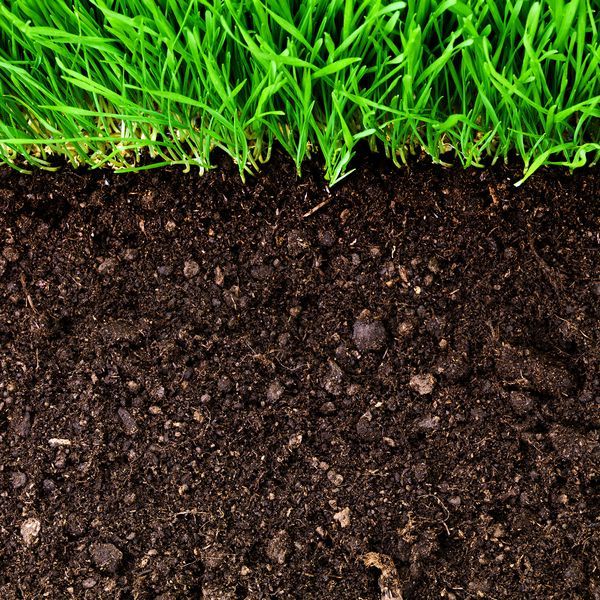
Soil
With more and more products now on the market, choosing a good soil mix is definitely not an easy task. A good starting point is considering things like permeability and aeration, as this will provide for the overall well-being of your plants. The main role of this type of growing medium is boosting the health and the development of the root system, whose function is comparable to the function of our digestive system.
Most soil mixes on the market, including All mix by BioBizz and Canna Terra Professional by Canna, consist of black peat (organic matter, heavier, less fibrous and at a higher level of decomposition than white peat), white peat (moss, generally sphangum, with high water retention capacity), perlite (retains moisture, aerates the soil and improves drainage), and vermicompost (an organic fertilizer rich in nitrogen and made up of worm droppings that is particularly useful during the flowering period). Adding bat guano when switching to flowering can be a good idea too, as its high phosphorus content is a great flower booster.
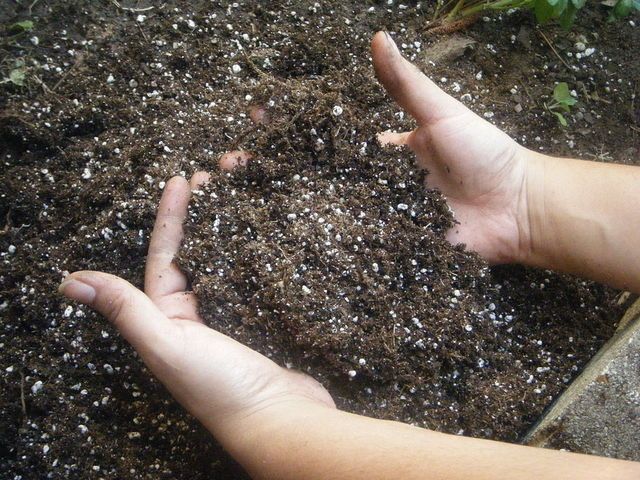
Below is the composition of most soil mixes available on the market (percentages may vary slightly across manufactures):
- 25% white peat
- 30% de black peat
- 10-15% vermicompost
- 30% perlite
- 5% fertilisers
As you can see, most soil mixes include fertilisers by default, this is why you shouldn't feed your plants for at least the first two weeks of growing. Otherwise, you risk overfertilising them and eventually burning them. The good thing about growing in soil is that it acts as a buffer (the elements it contains are assimilated more slowly) and thus gives you a larger margin of error. Also, the pH is much more stable than in other growing mediums. Therefore, we strongly recommend going for soil if you are a beginner, as it is a reliable medium that will help you obtain the best quality crop.
Coir
Coir consists of a mixture of treated fibres that are extracted from the husk of coconuts, some in the form of powder and some in their natural form. The result is an inert growing medium perfect for hydroponics.
The main benefit of growing in coir as opposed to soil, is that the process is faster thanks to its great aeration capacity, which results in a shorter growing period, in faster, more vigorous root development and in a higher presence of trichoderma, a kind of fungi that strengthens the immune system of plants by boosting microbial life.

The downside is that it dries out much quicker and therefore you will have to water more frequently, as lack of water can stress the plants and cause them serious damage. The real issue here is that, being an inert medium, you will have to adjust the EC and pH levels to the levels recommended for hydroponics at every watering. This is why we recommend this growing medium only to growers with some experience.
In any case, the key to making the most out of coir is to keep a good watering-aeration balance. And if you thoroughly wash the coir after harvesting in order to eliminate the accumulated mineral salts and avoid further problems, you won't need to change it for your next crop.
Rockwool
Rockwool is manufactured from volcanic rock (basalt), which is heated until liquid (around 1,600 ºC) and moulded into its final shape through mechanical processing.
With a pH of about 7, this inert substrate requires pH adjustment before use. To do so, you will need to leave the rocks to soak in a solution with a pH of 5.5 and an EC of 0.5-0.6 for 24 hours, after which you will be able to sow your seeds. The pH and EC levels of the nutrient solution for rockwool are the same as for coir and require constant monitoring as well, so we recommend this medium only to growers with some experience in hydroponics.
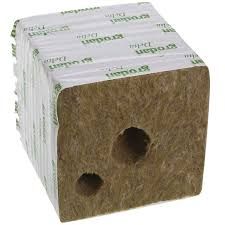
Just like coir, the main benefit of rockwool is its high aeration capacity, which results in faster crops. Accordingly, you will have to be as thorough as with coir when it comes to watering, ensuring a good moistening/drying balance for optimal results. And, again, you won't have to replace the rockwool before replanting provided you wash it well after harvesting.
Expanded clay granules
Expanded clay granules are aimed at hydroponics and, just like coir and rockwool, allow to dramatically reduce the length of the growing cycle thanks to their high aeration capacity.
If you go for this growing medium, the first thing to do is wash it and adjust the pH level. You can use a container like a bucket or a tub and leave the granules to soak in a solution with a pH of 5.5 for at least 48 hours.
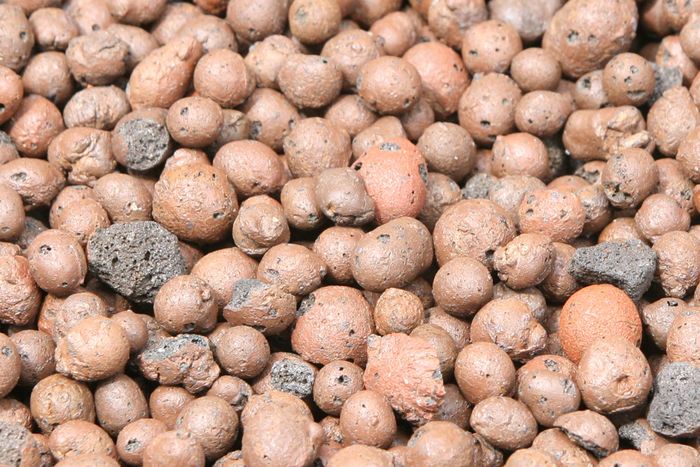
Another important thing to consider is that you will have to replace the water about four times – always with a pH of 5.5 – to ensure proper cleaning and pH adjustment. Otherwise, you can expect to face major pH and EC fluctuations, which could seriously interfere with nutrient assimilation.
Just like coir and rockwool, this is a reusable soil – again, you will have to clean it thoroughly after each use – and is only recommended for experienced cannabis growers.
Aeroponics
Aeroponics is a soilless growing method whose name means "working in the air". The concept behind it is simple: the roots grow suspended in the air and are periodically sprayed with a nutrient solution that keeps the plants fed. Contrary to hydroponics, the roots are not in direct contact with the nutrient solution, while both systems are similar in that they have a high aeration capacity, which again results in shorter growing time.
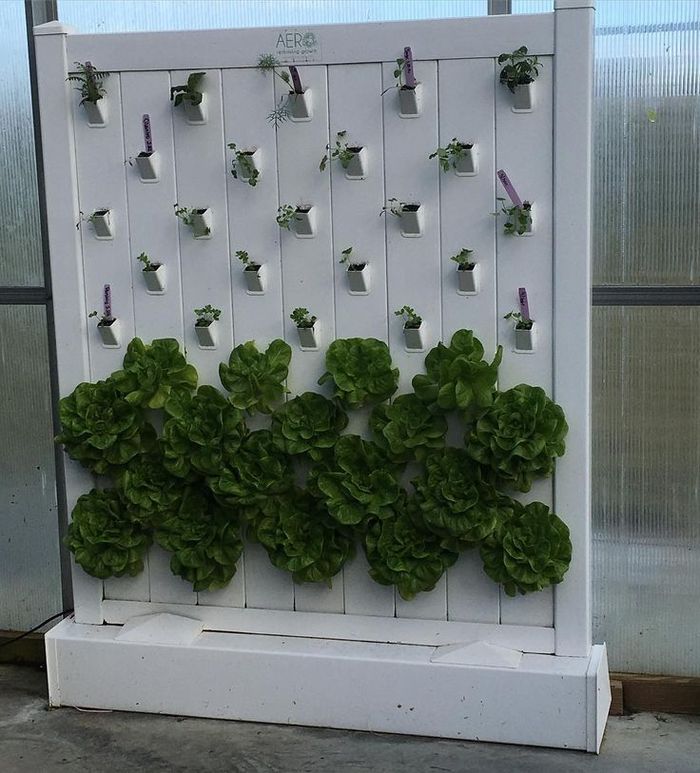
Requiring no growing medium, aeroponics is also a great way to preserve the environment, as no waste material is produced. Also, you will need smaller quantities of nutrient solution as it is directly applied to the roots. There are high pressure and low pressure aeroponics systems. Cheap and easy to install, the former are the most widespread, whereas the latter are more efficient but also harder to use, requiring greater experience.
The main difference is that with high pressure the nutrient solution is atomized more efficiently into a mist with very small droplet size, which allows the plants to make better use of it.
A basic aeroponic system consist of:
- A water pump
- A reservoir
- Nozzles
- A horizontal filter
- A pipe network
- A root chamber
The downside of such a system is that it is highly demanding from the technical point of view, as it has no buffer capacity whatsoever and leaves no room for mistakes. With no growing medium, all your actions will have an immediate effect on the plants and the sightless error can prove fatal. This is why we recommend this method only to seasoned growers with expertise in the subject. Beginners may find the technicalities interesting, but believe us when we say it is preferable to take a step-by-step approach.
In any case, aeroponic and hydroponic systems provide very similar results. At the end of the day, regardless of the medium and the method employed, it is the grower's experience that makes the difference.



Comments from our readers
There are no comments yet. Would you like to be the first?
Leave a comment!Did you like this post?
Your opinion about our seeds is very important to us and can help other users a lot (your email address won't be made public).